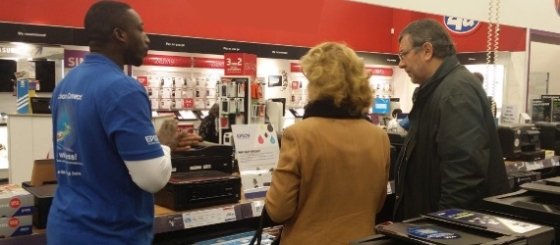How do brands respond to “shopper tribes” research to drive sales? A recent study commissioned by Gekko Group showed that only 15 per cent of shoppers are influenced by Ethical Issues, however, many companies try hard to distance their brands from any ethically negative press. Could consumers who are not flouting ethical issues be telling brands through this statistic that they expect them to be ethical? The recession has fueled the priority of bargains for many consumers, as they seek cheaper deals; however, consumers simultaneously wish that brands remain ethical.
Can brands do both?
Take companies like Innocent, Green & Blacks, Body Shop. Ethical, fair trade, cruelty-free are your immediate assumptions, but they are all owned by conglomerates who you would not immediately associate with ethics: Coca-Cola, Kraft and L’Oreal. What these brands have done through acquisition is target Millennials who are all about niche brands, small start-ups and companies that they relate to. They want to support brands they like – those brands that reflect their values. However, shouldn’t we expect ethics from all brands regardless? Shouldn’t it be built into the essence of every brand to ensure they care about the planet, humanity and cultures without question?
The small percentage of consumers that consider ethics as key in their shopping activity indicates the trust they place in brands to already be ethical in their product. As with the great sugar/obesity debate, we make our own choices. This choice extends to the brands we use every day and how we choose to identify with them. Can an airline ever be truly environmentally friendly? And the same goes for cosmetics, processed foods, electronics and, in fact, everything we buy. Every brand tries to do their bit, but it should be done without question, as a matter of course and continuously challenged internally.
Packaging of these brands will happily shout out “Natural”, “Organic” and “Sustainable”, and are usually emblazoned across the majority of the packaging to strengthen brands’ credentials and continually build that perceived trust we have in them that they are doing the right thing. Look closer and those tiny ingredients don’t look as natural, organic or sustainable as they could be. This could certainly turn us off those brands little by little until we eventually stop recommending or, worse still, stop buying the products. It’s up to the brand to do the right thing or be honest and give consumers the choice.
The ethics debate is a debate that will never go away and one that will forever be relevant to every generation. However, whilst only 15 per cent consider it in the mix, we must remember that for the 85 per cent that don’t, it’s not that they don’t care, but that they trust every brand to act responsibly in all that they do – just like most people, I suspect, choose to do in their everyday lives.
Read the full article at http://www.brandingmagazine.com/2014/03/25/ethical-bargains-do-they-exist/



